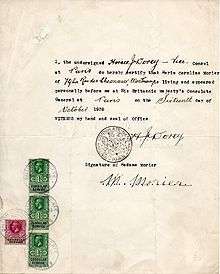Certificate of life

A Certificate of Life (also called a Proof of Life, Certificate of Existence or Letter of Existence) is a certificate produced by a trusted entity to confirm that an individual is still alive.[1]
Governments, pension and insurance companies and other bodies may need to check periodically that the people they are paying have not died in order that they do not overpay annuities and pensions.[2]
Where individuals are resident outside their country of origin, a Certificate of Life may sometimes be obtained from a person's embassy in their country of residence by producing proof of identity such as a passport.
In the United Kingdom, a Certificate of Life is termed a Certificate of Existence. When a UK resident is in receipt of a pension from a European country from time to time the pensioner may be required to complete a Certificate of Existence form. The pensioner must get the form stamped, dated and signed by an Electoral Officer at the pensioner's local authority. The completion process requires the pensioner to physically attend at the local authority office where he is resident with his/her passport or driving licence (as proof of identity) and a recent Council Tax bill (as proof of the pension's address in the Local Authority). No charge is levied by the local authority for stamping, dating and signing the Certificate of Existence.
Certificates of Existence are completed by a local authority because it is the arm of government which registers births, marriages and deaths of local residents and also manage the electoral register under the requirements of the Representation of the People Act 2000. No other party (e.g. a solicitor or notary) can purport to sign a Certificate of Existence since only the local authority has write-enabled access to UK death records and the electoral register.
References
- ↑ Definition of certificate of existence Financial Times Lexicon, Financial Times Ltd., 2014. Retrieved 24 February 2010.
- ↑ House of Commons papers, Volume 28 , by Great Britain. Parliament. House of Commons, published by Office of Public Sector Information, 1848. Page 21
External links
- Obtaining a Certificate of Life from the Israeli Consulate in New York.
- Obtaining a Certificate of Life from the Netherlands Embassy in Washington D.C.